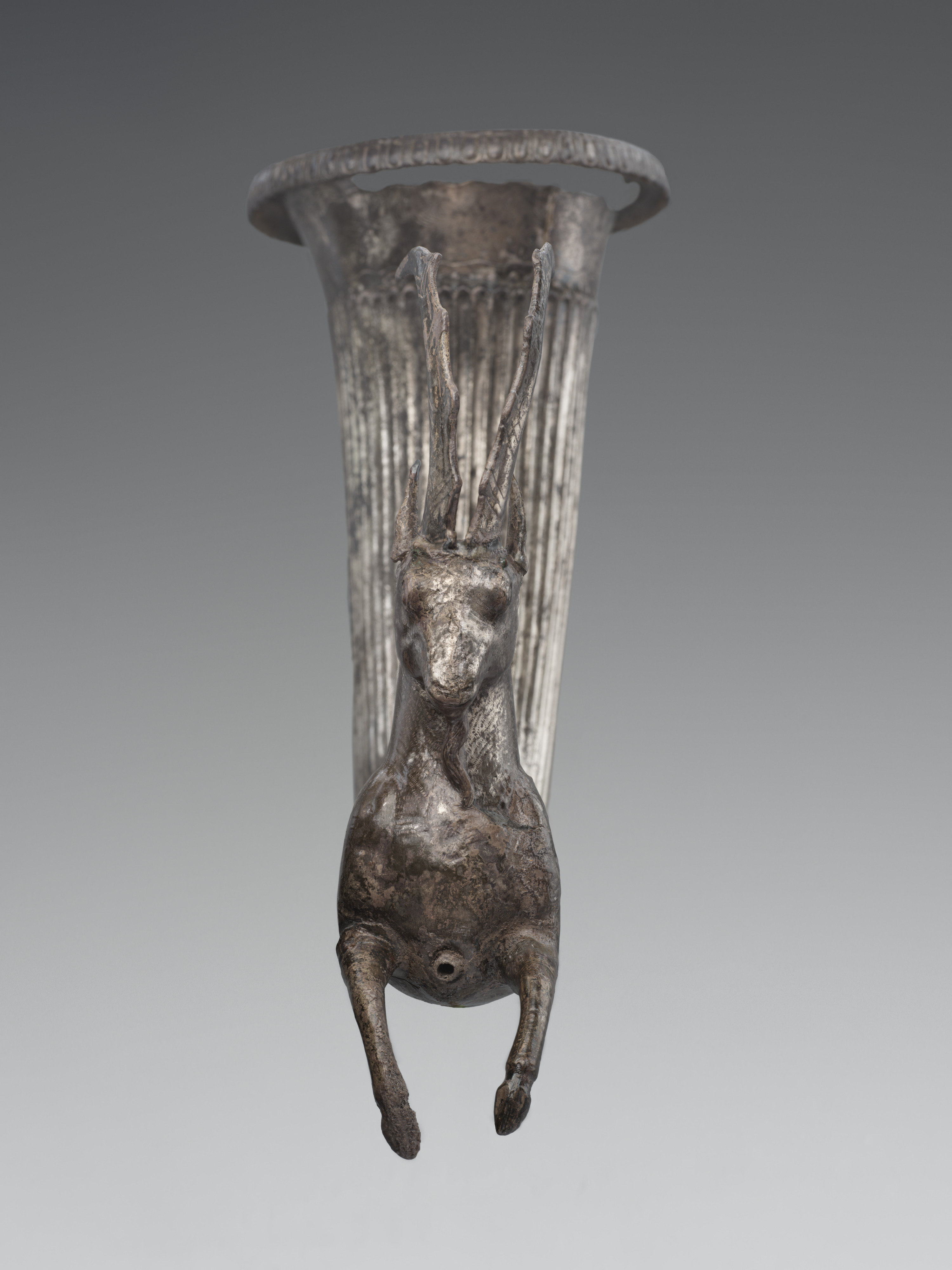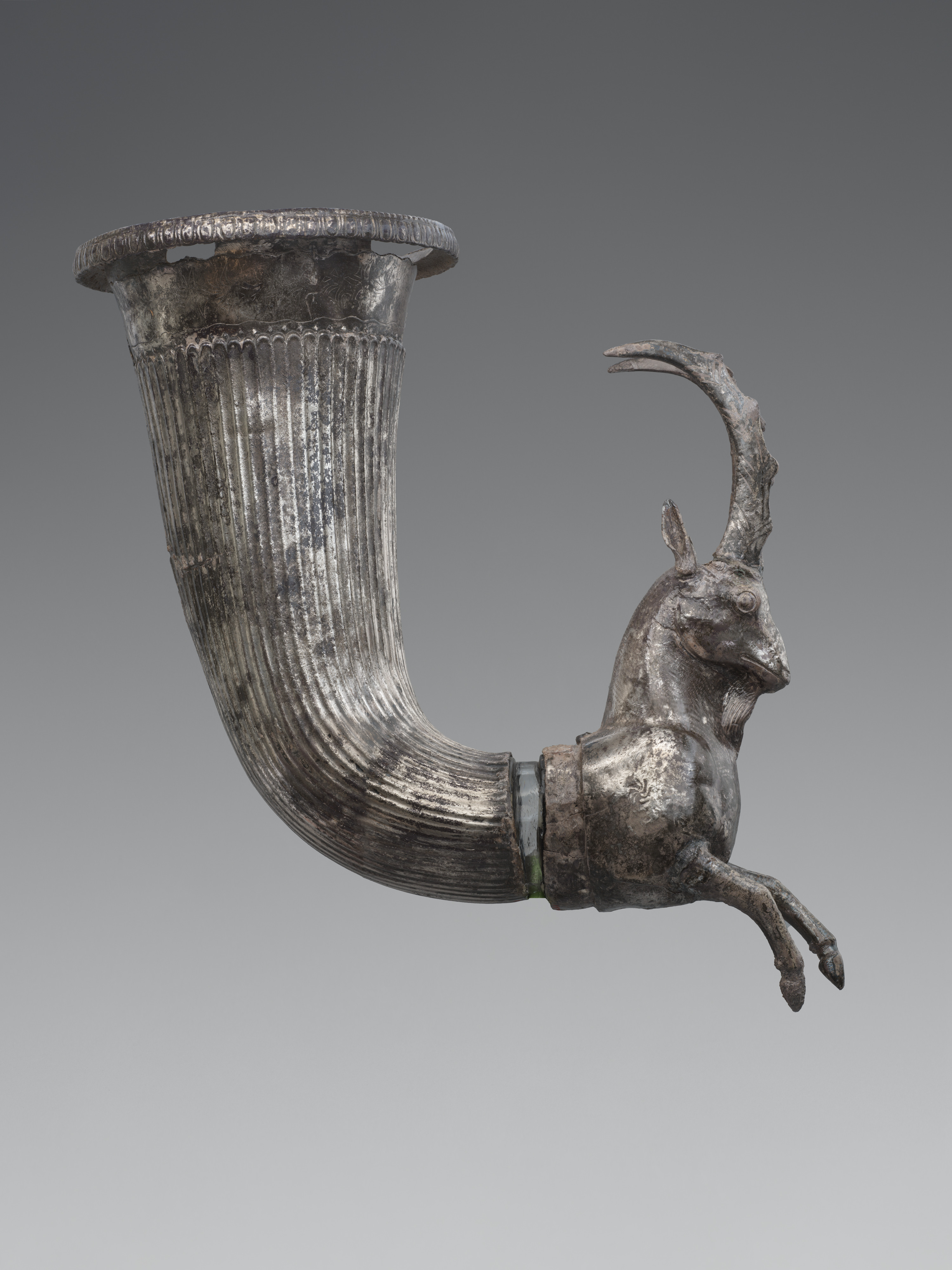Rhyton terminating in the forepart of a wild goat
Not on view
This vessel is called a ‘rhyton’ (from the Greek rheo, meaning ‘flow through’) by scholars because it has a spout at the bottom. Like many rhyta, it consists of a horn-shaped beaker and a hollow sculptural element, in this case in the form of the foreparts of an ibex or wild goat. The beaker has vertical fluting with floral decoration at the top. The rim is folded over and decorated with an egg-and-dart pattern. The goat has extended forelegs, as if galloping. It has a long goatee, a pointed snout, a prominent brow, pointed ears and long curved horns. The pouring spout is on its chest between its legs. The goat’s body was hammered from a single sheet of silver, with the legs, horns and ears attached. The beaker is also hammered.
Rhyta originated in the Achaemenid Persian Empire, and this example was originally attributed to Iran. However, recent research has shown that its beaker closely resembles in size and form two Thracian rhyta discovered in northern Bulgaria; in fact all three vessels may have been made in the same workshop. Accordingly, this rhyton has been re-attribution to Thrace, in what is today northern Greece and Bulgaria. Thrace was part of the Achaemenid Empire for about fifty years, until the end of the Persian Wars in 479 B.C. The Thracians adopted many features of Persian culture as their own, including the use of rhyta, and by the fourth century the Thracians were producing some of the most spectacular gold and silver vessels in the ancient world. The ibex may have been inspired by Persian rhyta, since ibexes have a long history of representation in ancient Iranian art. Alternatively, it may have had some special significance for the Thracians.
Due to rights restrictions, this image cannot be enlarged, viewed at full screen, or downloaded.
This artwork is meant to be viewed from right to left. Scroll left to view more.




